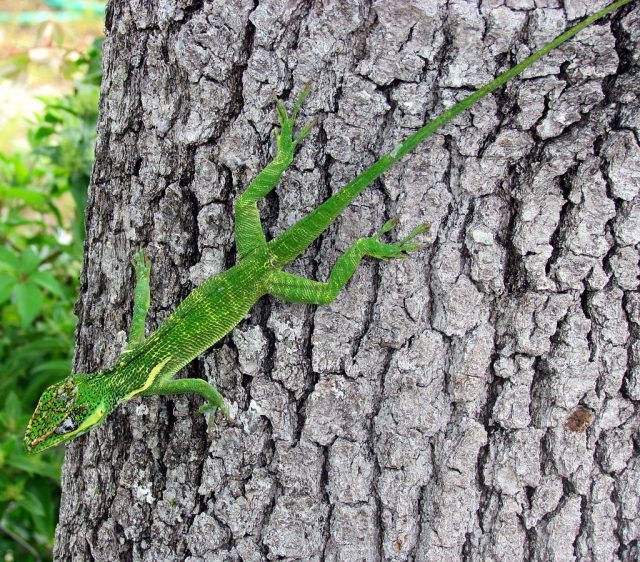Type the name of the breed you're looking for below
[wpdreams_ajaxsearchlite] Don't see the breed your're looking for? Click here and let us know!
Knight Anole
| Place of Origin and Range | Knight anoles are native to Cuba, but have been widely introduced into South Florida, where they reproduce and spread readily. They cannot withstand freezing temperatures; in winter freezes in South Florida, they drop semi-conscious from tree canopies. In its native Cuba, this large anole is called chipojo. |
| Description | The typical colouration for a Knight Anole ranges from the richest and brightest of greens to the darkest of browns, with little variation in between. Coral pink dewlap, and yellow shoulder stripes. |
| Morph Patterns Available | Yes |
| Adult Size | Can grow up to 16 in( 40cm) |
| Accommodation | Knight anoles are arboreal although during the day are known to warm on asphalt, rocks, or sidewalks. They are very active and predatory lizards, requiring a large amount of space to run. They prefer high temperatures, up to 105–110 °F (41–43 °C) at their basking spot and 80 °F (27 °C) elsewhere in their habitat during the day. Grasses and lots of things to climb on. |
| Lifespan | Can live 16+ years |
| Feeding / Diet | The Anole's diet consists of small insects such as crickets, grasshoppers, spiders, and other arthropods. It also eats grasses. Many people who keep these lizards as pets feed them meal worms, grubs, and maggots, and small crickets. Meal worms though can be tough on their digestive track due to hard exteriors. |
| Other Considerations | It is fiercely territorial. Aggressive to anything that enters its territory, the Knight Anole will face almost any intruder it perceives to be a threat (from a distance). During its display, a lizard will sit high on all fours, gape menacingly, turn green, and perhaps bob its head. The male will extend its dewlap (a reddish-white flap underneath the chin), and both females and males will "puff themselves up" with air. |



